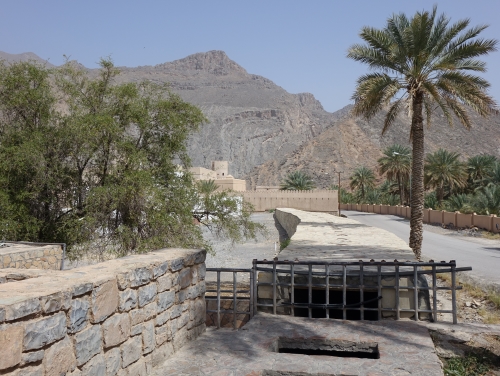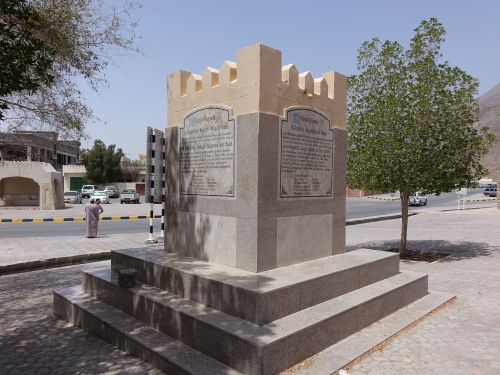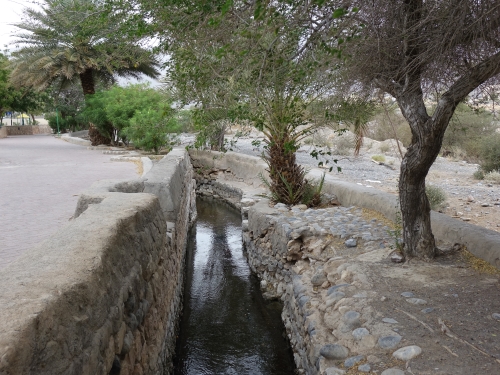Blog WHS Visits
WHS #655: Aflaj of Oman
The Aflaj are as typical of Oman as its fortresses. Nearly every village or town with roots older than Sultan Qaboos’s reign has such a falaj irrigation system. A combination of 5 out of the more than 3,000 still functioning systems have been declared a World Heritage Site. Of these 5, I visited the ones in Birkat Al-Mouz (Falaj Al-Khatmeen) and Nizwa (Falaj Daris). To both there is no formal access, they just lie in public areas.

The town of Birkat Al-Mouz is conveniently located en route between Muscat and Nizwa. When I parked my rental car at the local fort, I was immediately approached by a man in a 4x4 who asked whether I wanted a tour to the nearby mountain Jebel Akhdar. The "green mountain" is rather dry at this time of year, so I let that opportunity pass me by. For most tourists however the mountain is a bigger attraction than a falaj. T
he downhill stream of the Falaj Al-Khatmeen is easy to follow in Birkat Al-Mouz. It first appears above ground at the back of the Bait al Radidah fortress. Then it flows past the mosque, where there also are ablution spaces using the falaj (they look like dressing rooms or public toilets). Next to it is the WHS marker: a square column with the inscription text in 4 languages - Arabic, English, German and (I am not sure about this one) French. Later in the day I encountered the same style of marker at Falaj Daris.

The irrigation channel itself is not a spectacular sight, but coming closer to daily life in a village like Birkat is worth the visit in itself. Birkat’s town center has some large trees that provide much appreciated shade. A group of older men were sitting underneath them on the sand, playing dominoes. Others used the stone edge of the falaj as a bench. The channel here splits into several branches to distribute the water around town. I continued my walk along a field with date palms. Two men were busy trimming one of the palm trees at the top, so that the dates will have the space to grow.
Following the advice from my Bradt Travel Guide, I went further into the village. Still the many branches of the irrigation canal were all around to see. After fifteen minutes I arrived at the gate of a cluster of wonderfully ramshackle mud houses. Most inhabitants have left this part of the village to settle in more modern houses elsewhere in Birkat Al-Mouz. But still some seem to be inhabited, at least I noticed laundry hanging outside to dry.

Later in the day I made my way to Falaj Daris, just north of Nizwa. It is signposted from the road to Bahla, just keep on going til you see the brown sign. Here they have designed a park around the old falaj. There were some children playing, and young guys noisily crossed the terrain with mopeds. People swim or even bathe in this falaj. It has plenty of water in it, and it is much broader than the one in Birkat Al-Mouz. Unfortunately there is only a short stretch of the falaj above the ground, so it is of limited interest. In Birkat Al-Mouz I spent almost one and a half hour, in Nizwa less than 5 minutes….
Els - 7 April 2018